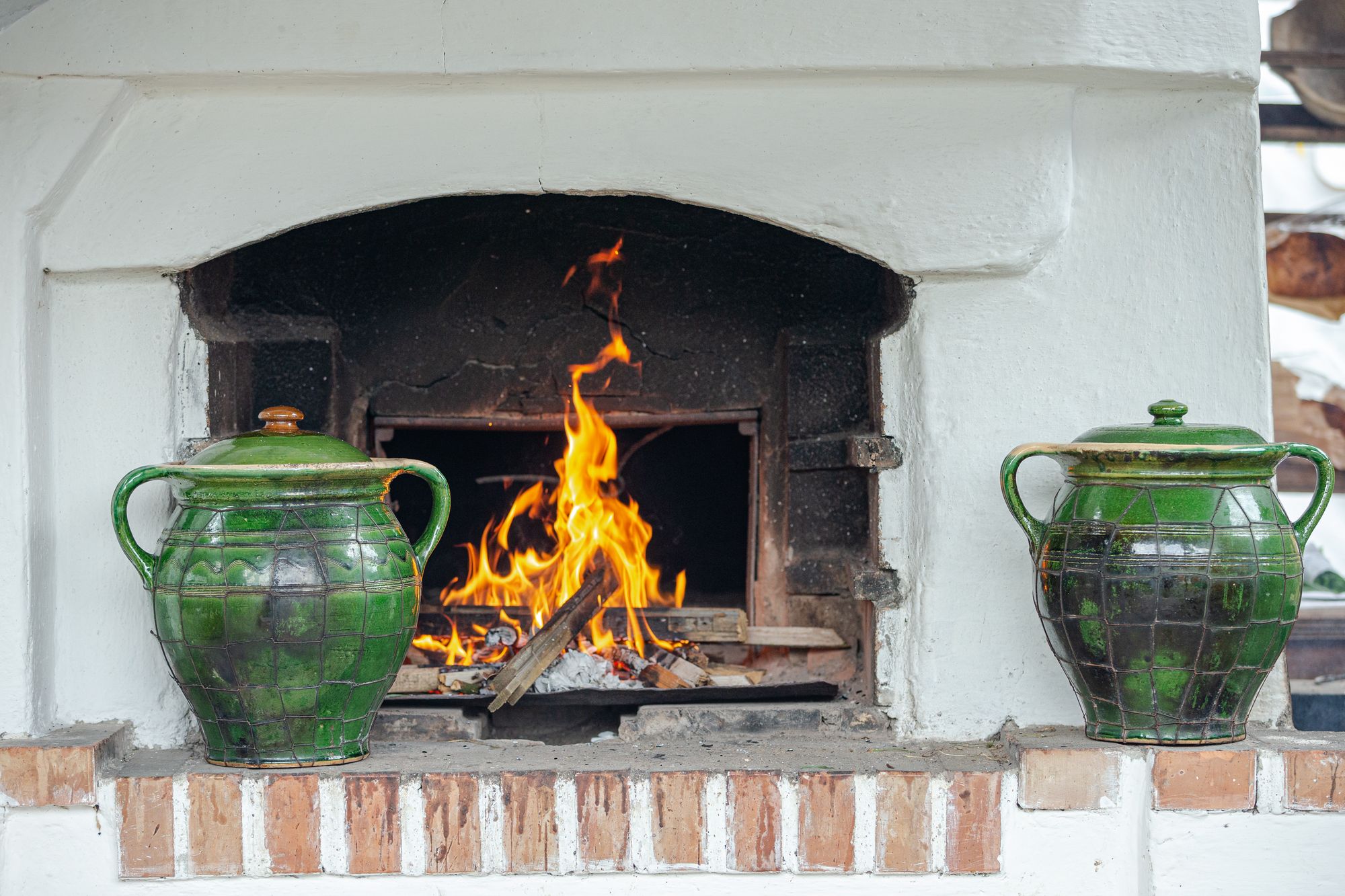If many people wish for a thing, sooner or later it will become reality—perhaps this could be the motto of the first Taste of Transylvania gastronomy festival, which took place between the 7th and 9th of October in Lunca de Jos, in the heart of Harghita County, in the Transylvanian region of Romania. The Hospitality (with a capital H) that we were greeted with was incredibly rewarding, both physically and spiritually, but it took the faith and humble work of many people.
I have always longed for the mountains. I love it when I reach the top after a long ascent and then turn around, a little out of breath, to see the endless horizon in front of me. I have always admired the Carpathians, but I never dreamt that I would end up here on a ‘work’ assignment. Yet that is what happened when I received an invitation to the Taste of Transylvania festival, the first thematic gastronomic event of Transylvania, which aimed to introduce visitors to the cultural specificities of local cuisine.
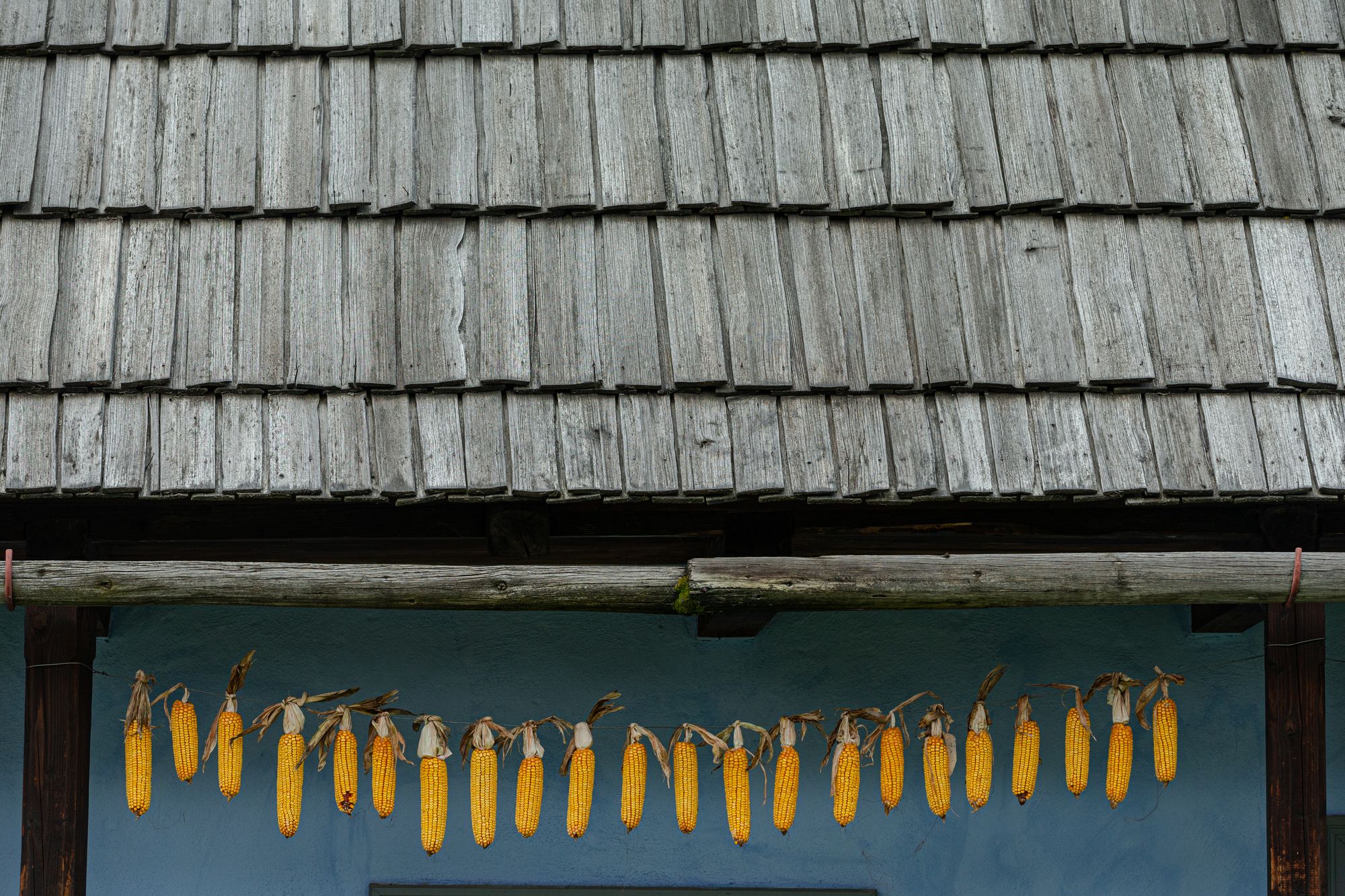
Adorján Trucza (the head of the Páva restaurant in Odorheiu Secuiesc), came up with the idea after participating in the Michelin-starred SALT dinner experience in the salt mines of Praid, Romania, in March, under the direction of chef Szilárd Tóth. The unexpected connections made there inspired him to continue. The concept was to condense everything that is Transylvanian gastronomy into a couple of days: classic and reimagined dishes, traditional ingredients and techniques, effervescence, and good people. He has identified three main pillars: exhibitors, workshops, and shows. It is no secret that Gourmet Festival in Budapest, where Páva participated as the only Transylvanian restaurant this year, was also a model for them.

Such a large-scale event could not have been done alone, so he started to assemble the team, including Dalma Kormos from SALT, while the host of the event became the well-established duo of Zsóf Mautner and András Jókuti. The only thing missing was a venue, but luck smiled upon them once again: they immediately found common ground with the owners of the Gyimesi Skanzen (an open-air museum showcasing traditional lifestyle and buildings—the Transl.) located in Borospataka (Valea Boroș), Lunca de Jos. Here, the small villages attached to the larger municipalities are called ‘patak,’ hence the name. There are 52 of them in the Gyimes region, where nearly 15,000 Csángó live (a Hungarian ethnographic group in Romania—the Transl.), but there are also many Szeklers (a Hungarian subgroup in Romania—the Transl.) living in the area. This area was uninhabited until the mid-1600s, when various refugees (including criminals, bride kidnappers, and political convicts) began to populate it, finding a home in the safety of the mountains. This has also, to a degree, secluded the peoples of the region, allowing the culture (language, dance, gastronomy) to be preserved, like the 5 or 6 surnames (like ‘Antal’) that many of the local families bear even today.
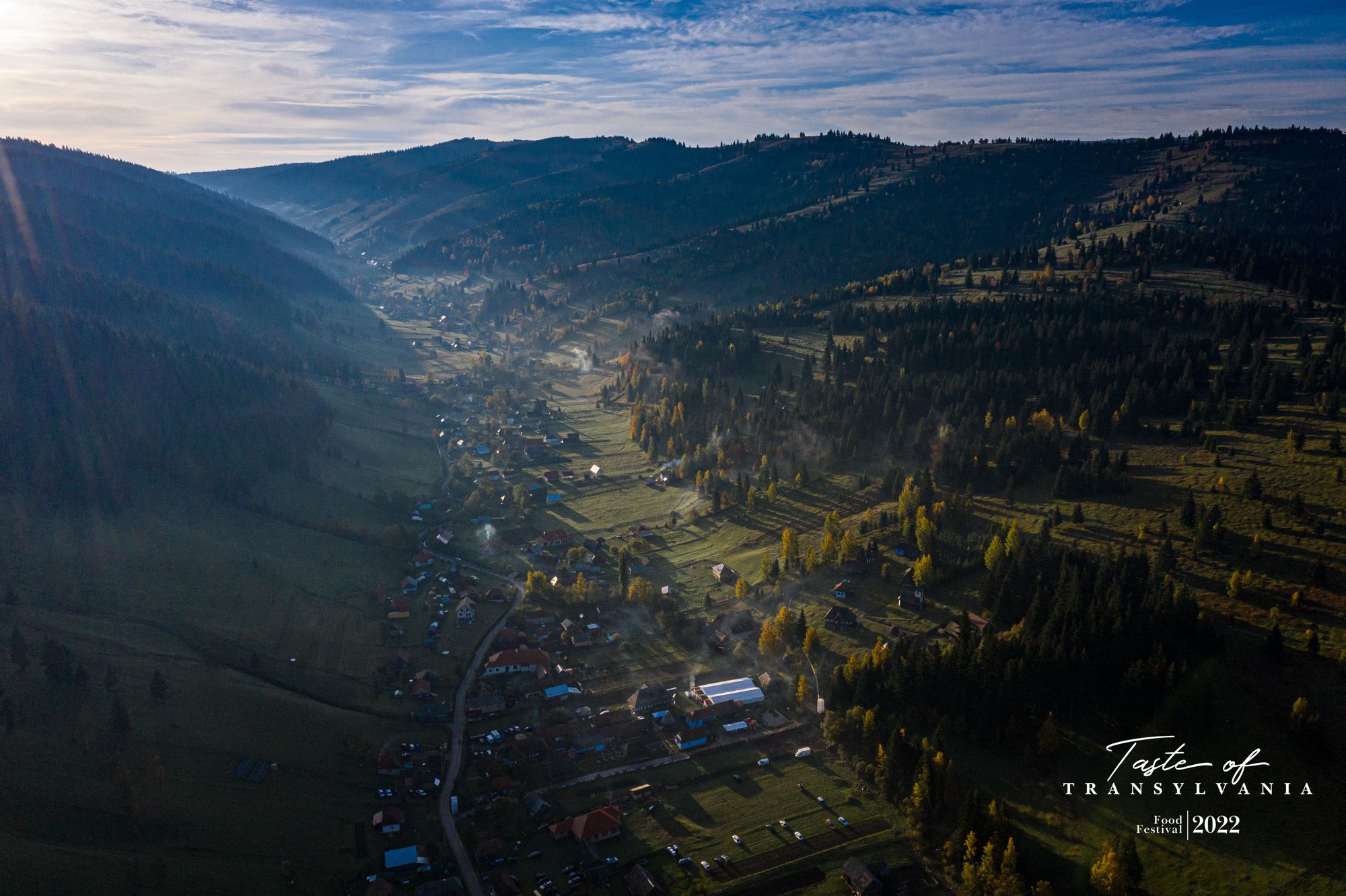
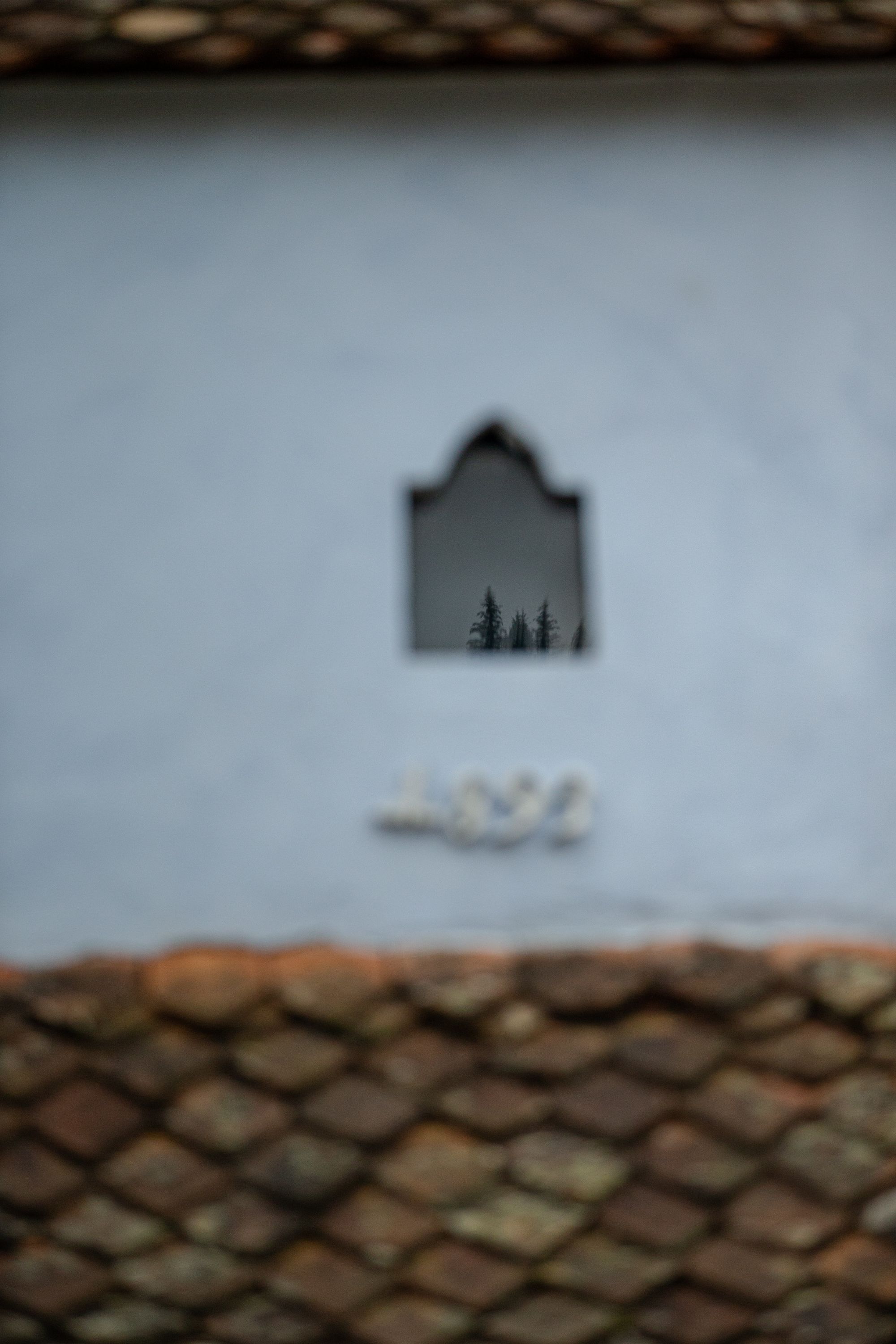
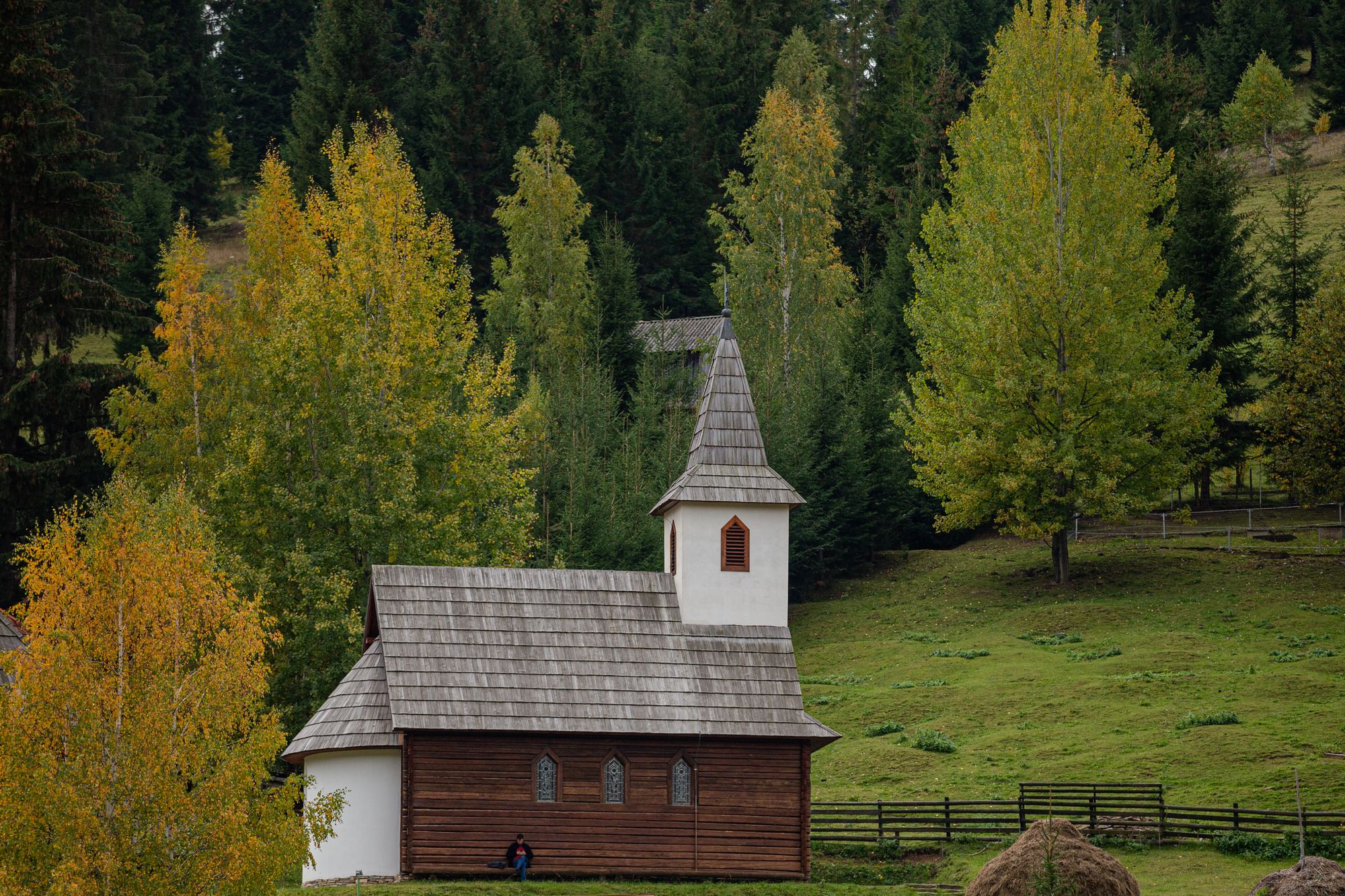
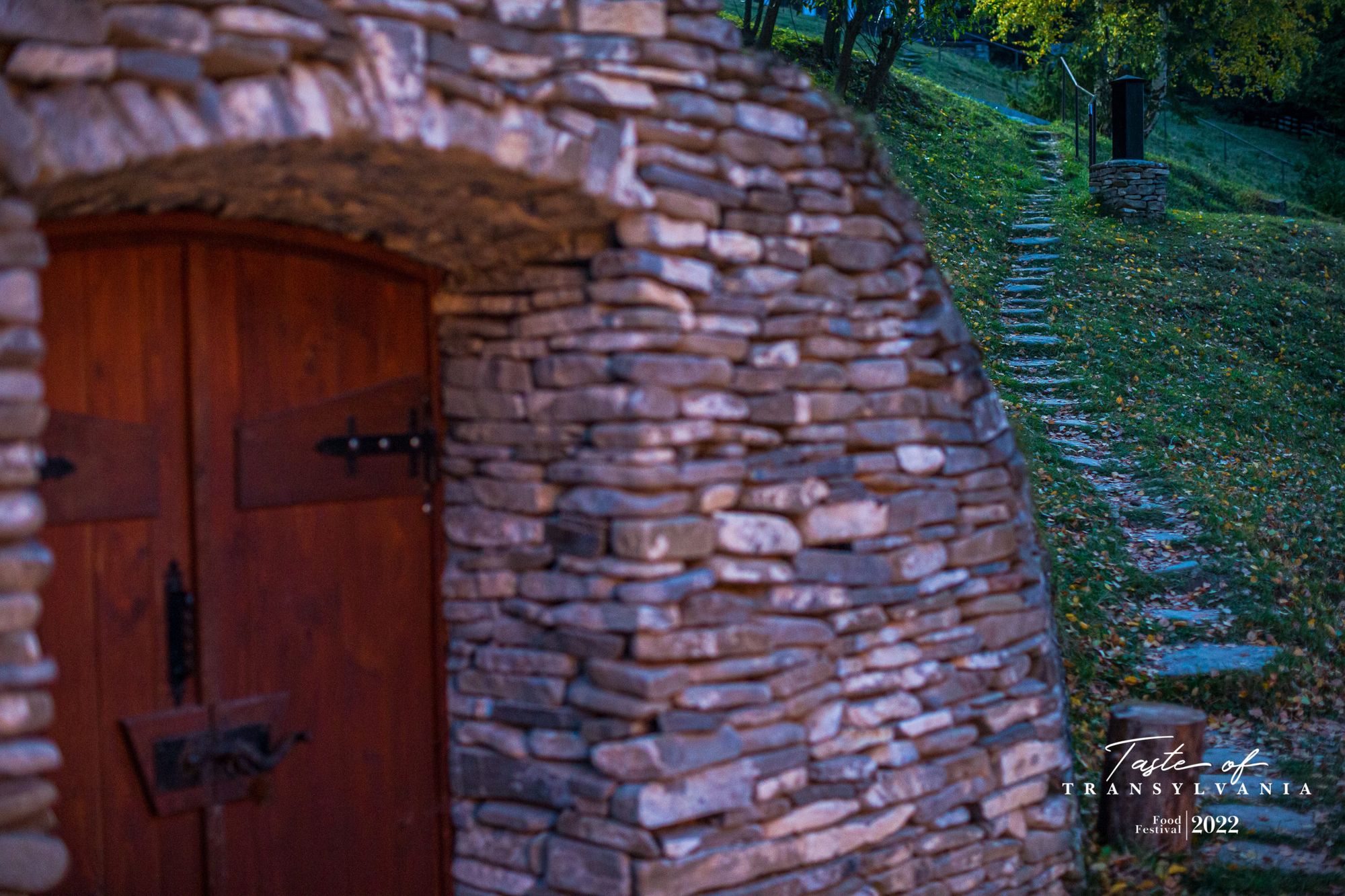
The Szász family who created the Gyimesi Skanzen visited the area in 2002. They fell in love with it and bought a piece of land, which at that time had nothing but an old house and a barn on it. The large-scale work of building the skanzen has then begun, in which István, the husband (who had previously helped to build the 1992 Hungarian Pavilion in Seville with his team of carpenters), played an important role; but any other help they had was also the hands-on labor of family and friends. All the houses were brought together from the surrounding area and rebuilt here, many times saving them from being used as firewood—because as there is no gas in the area, most of the buildings are still heated with wood. The Szász family wanted to set an example and preserve what was important from the past, so they tried to be as authentic as possible.
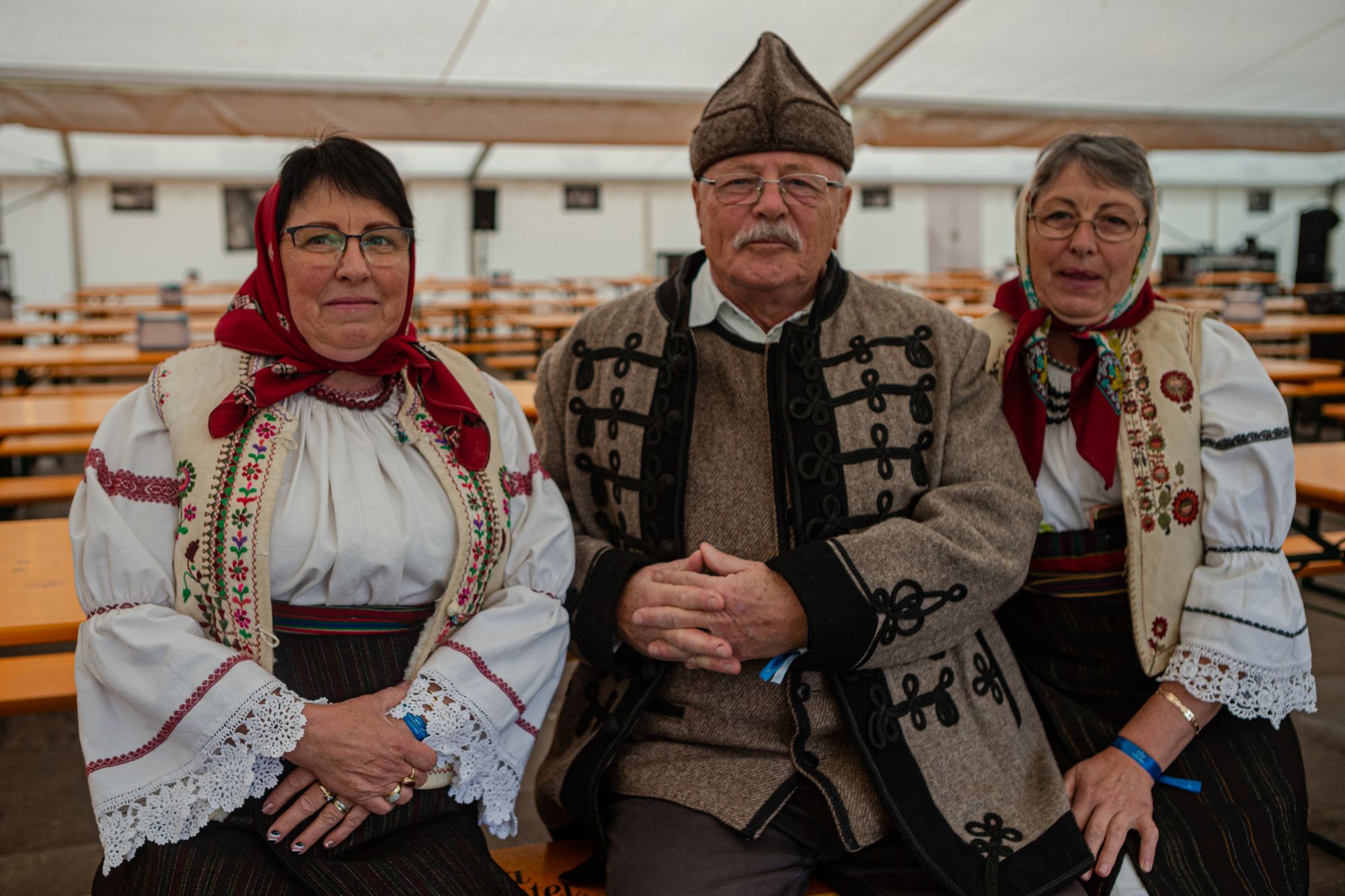
Several houses were preserved together with their furnishings, which also got restored, and often artist friends were called in for these tasks. Officially opened in 2008, there are currently 14 farmhouses that provide accommodation, as well as an events-barn, a water mill, a museum, and a chapel. The peace that emanates from this landscape is incredible—it is a surreal experience to stand on the road and see the mountains towering directly in front of you as if the space was curving. The only way to live here is to be in harmony with nature, which involves learning to accept living conditions. One year, for instance, the winter was so cold (around -40°C) that an overheated house caught fire on New Year’s Eve, but the roads can also easily become slippery from the fog and the snow.
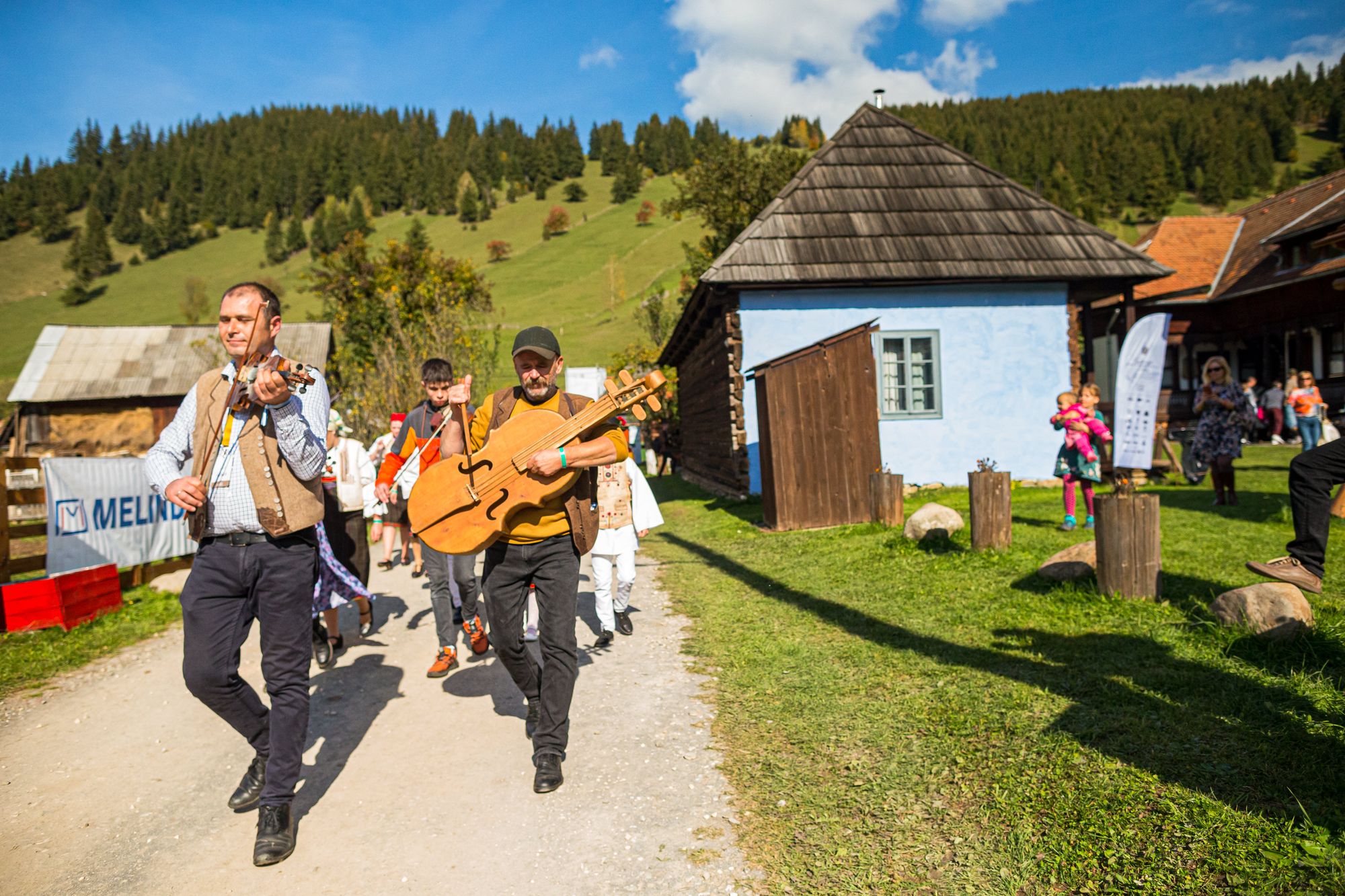
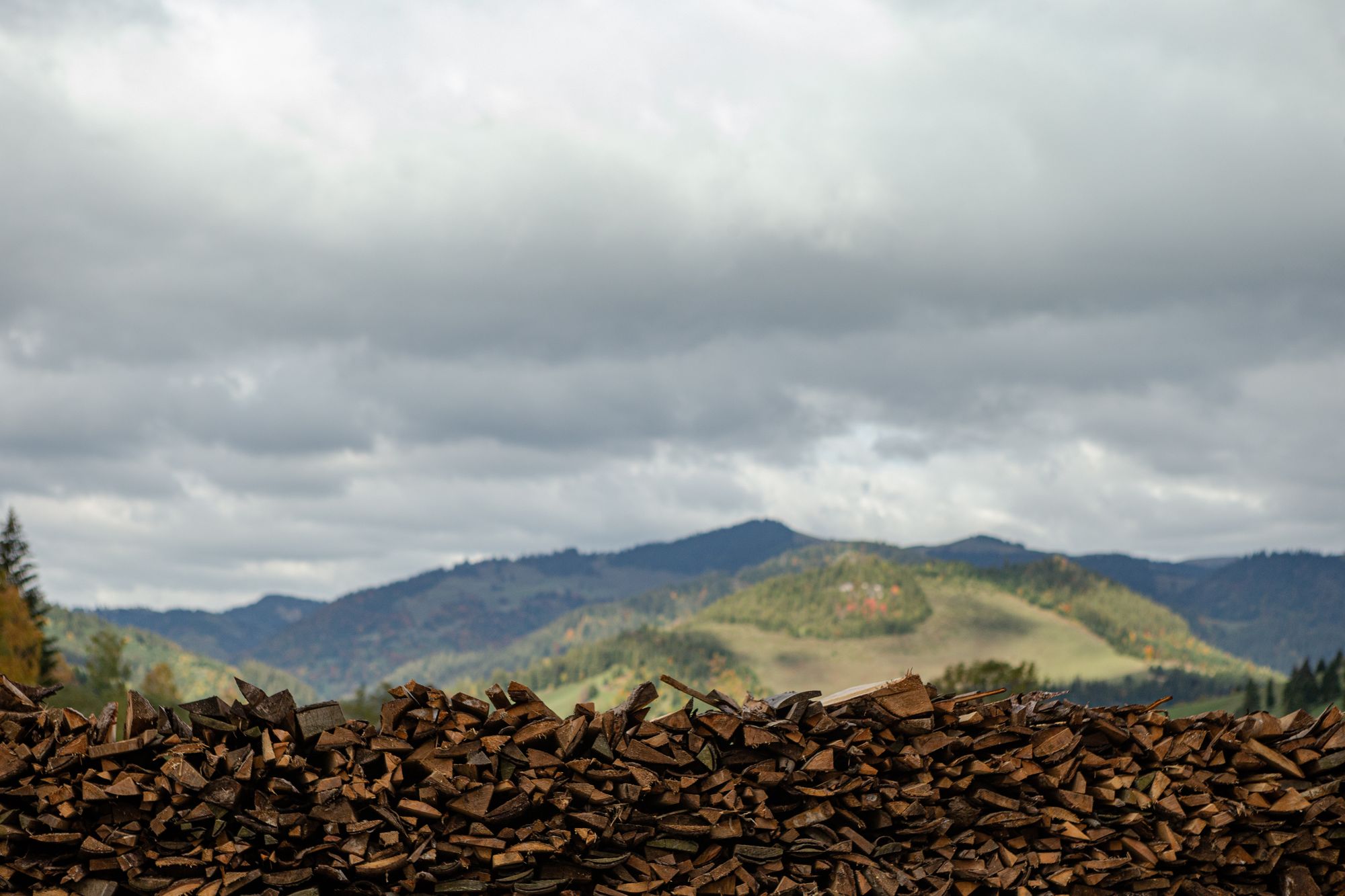
We were fortunate enough to be able to soak up all the sun of the Indian summer. As visitors to the festival, we had to slow down a little. Livestock is still common in these villages, with cattle, sheep, and goats clambering over the rough terrain. They help in the cultivation of the land, their wool is used for traditional costumes (for example the so-called ‘starched fur’), and the animals also provide the basis for their food. Few things are grown here (mostly potatoes, cabbage, and apples), so their cuisine is heavily based on meat and dairy products. Seasonality and closeness to nature are not just buzzwords here, but reality—people here have always eaten what was available.

This heritage conservation and the revival, display, and very subtle modernization of forgotten ingredients and recipes now go hand in hand in the region’s gastronomic scene. At the festival, we started with the basics, tasting traditional puliszka (a porridge made out of yellow maize flour—the Transl.) stuffed with sheep’s cheese, also known as bóc, and two types of stuffed cabbage prepared by traditional Csángó women. The former was made into dumplings and fried on a wood-fired stove, while the latter was served in two versions (meatless, i.e. “lent,” and meat). The fatty homemade sour cream and warm hospitality were just a bonus—something that characterized everyone I met. “Don’t go hungry or thirsty!”—we often hear from our guide Emőke Joó, and a slice of bread or a small glass of pálinka was already in our hands.

The warmth was provided not only by the alcohol, but also by the oven of course: our hosts took us to the Molnár Bakery, where traditional Gyimes bread with potato, the so-called ‘beaten bread’, is made. The women bake the loaves in a wood-fired oven, containing boiled potatoes and wheat flour in a 1:2 ratio. Only sourdough is added to the mix, and once it has risen, it is ready to bake. This is how the two-kilo loaves are made, with the black, burnt crusts of the loaves, jokingly called ‘Csángó chips’, being peeled off. Although they started out as a small manufactory, today up to 3,500 kg are produced a day, with the hard labor of more than 40 employees. The resulting loaves are soft on the inside, crispy on the outside, extremely tasty, and have a long shelf life, which has caught the attention of not only the people of Gyimesközéplok but also the surrounding area.

These ancient processes, such as sourdough fermentation and pickling, permeate the region’s cuisine and are found in many recipes. This is the same in Hungarian rural cuisine, but what is perhaps different, is that in Transylvania more green herbs and less paprika are used, with tarragon, dill, chives, and parsley being added to almost everything. I am keen to explore everything rare and ancient, so I was familiar with the concept of churut, for example, but never tasted it or seen it made. Here, however, we were able to meet the couple who are the last to make it. It is a favorite condiment in Armenian cuisine, based on homemade fatty milk that’s been fermented for 6 weeks. After this, it is cooked in a copper pot for 8 hours until it thickens, spiced with a dash of summer savory and plenty of parsley. When it has cooled, the whey is drained off, made into cones, and dried. It stays good for a very long time, but can also be frozen. The flavor is quite sour, so they use it in grated form, for example, to season the traditional Armenian angajabour soup, made with vegetables and tiny veal-stuffed dumplings. (The similarity to Chinese wonton soup is striking—gastronomy is a big melting pot!)
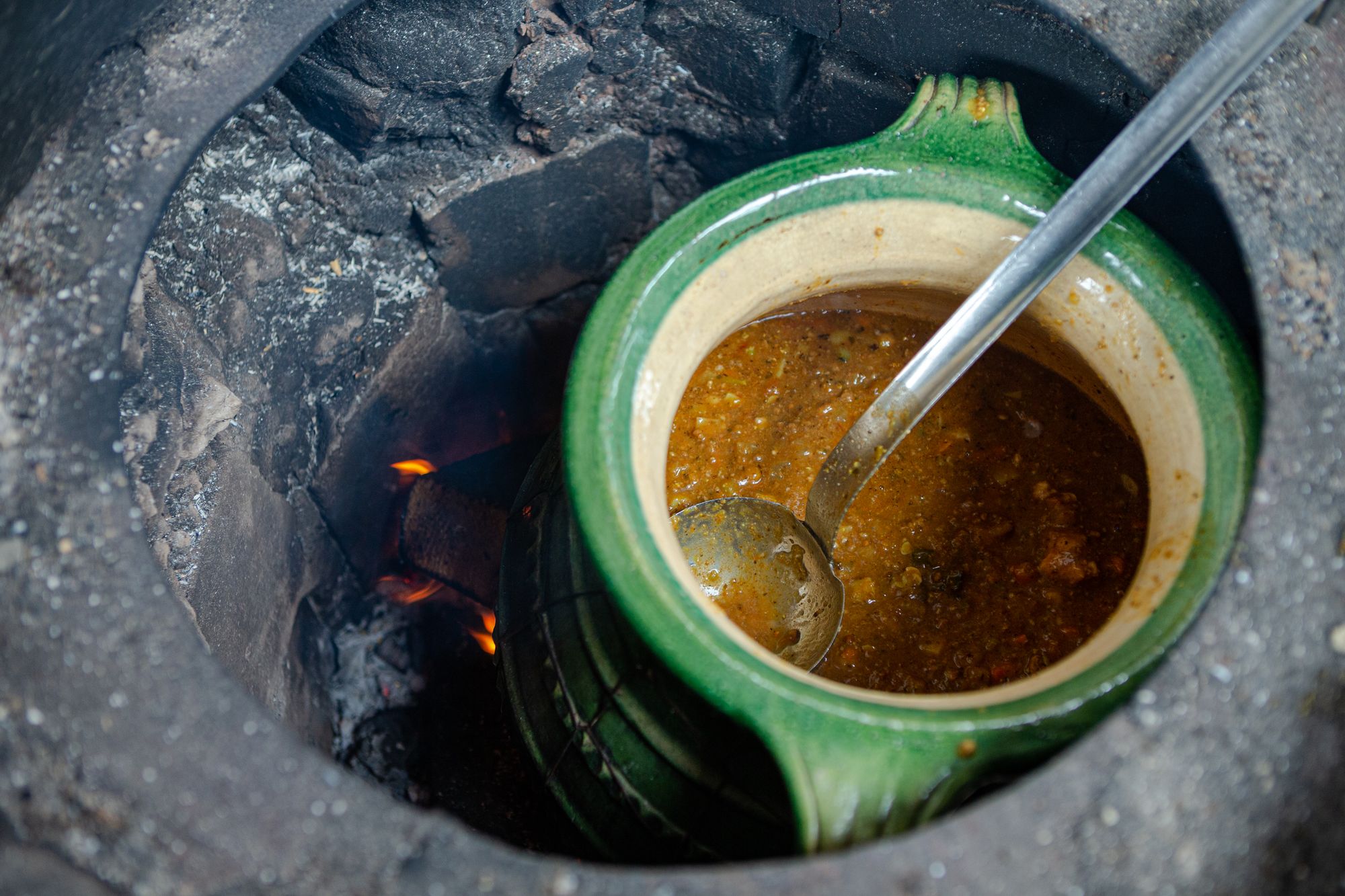
Arriving at the festival, the visitors could immediately catch the scent of old meeting new after exchanging their cash for ‘picula,’ the festival’s special currency: the team of Babka, led by Attila Nemesvölgyi who is good friends with the organizers, made a fusion lamb harira, a Moroccan spicy soup with legumes. This time, however, instead of lean meat lamb tails from Berke Farm—run by Tamás Szabó—were the main ingredient, cooked in Attila Légli’s inner-circulating ceramic pots, and prepared in a traditional oven. This made the soup not only substantial and collagen-rich but also heart-warming, which was welcome after the long journey. It was a nice gesture to prepare the food with lesser ingredients of the animal—anyone who grew up in the countryside knows that every cartilage, bone, every offal is a treasure. Another special guest was the IKON restaurant from Debrecen, Hungary, with the chef, Ádám Thür, cooking on stage. They served a Nyírség-style soup made with deer ragout, dill oil, and fresh vegetables, probably one of my favorite dishes of the whole event.
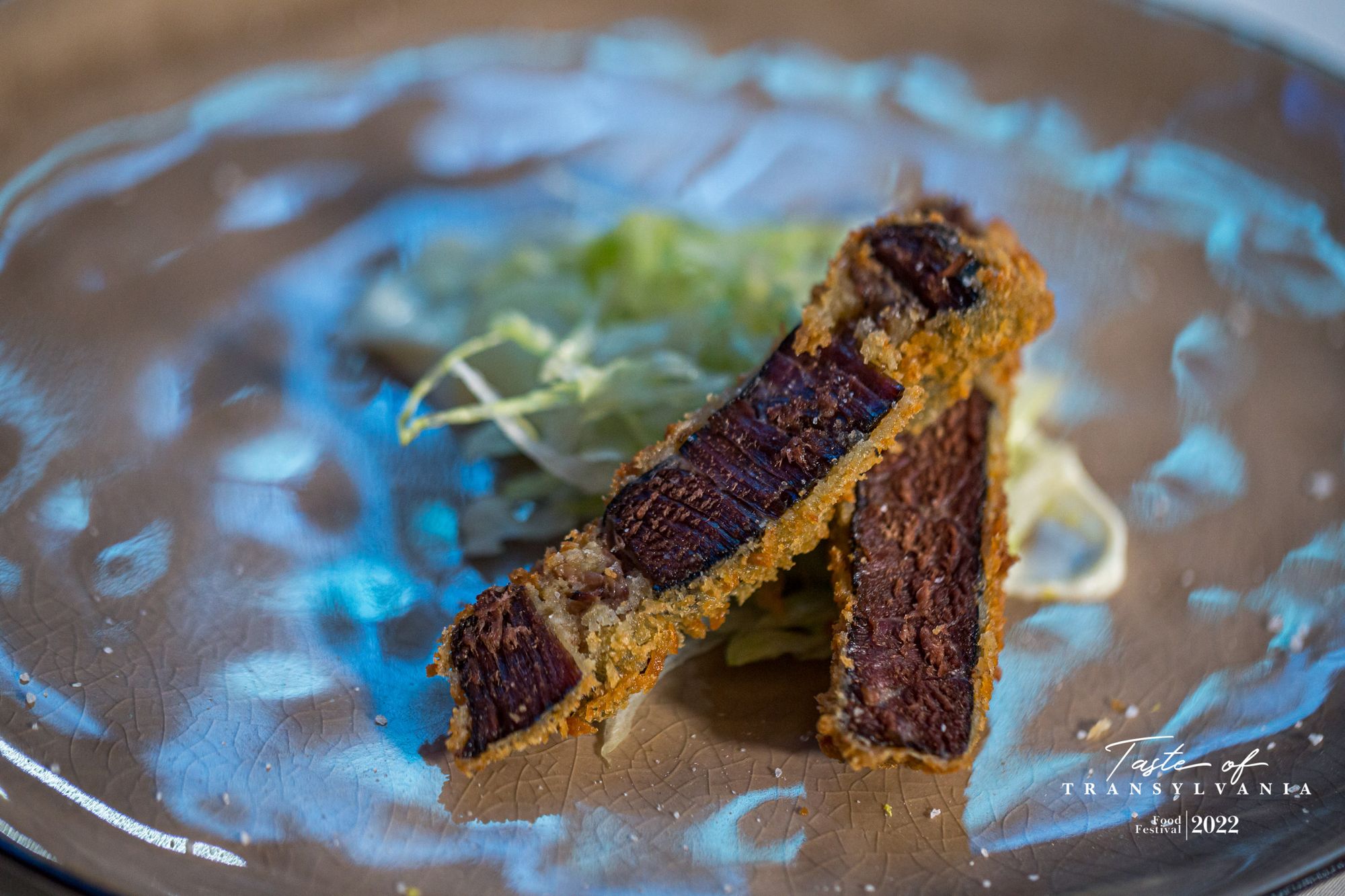
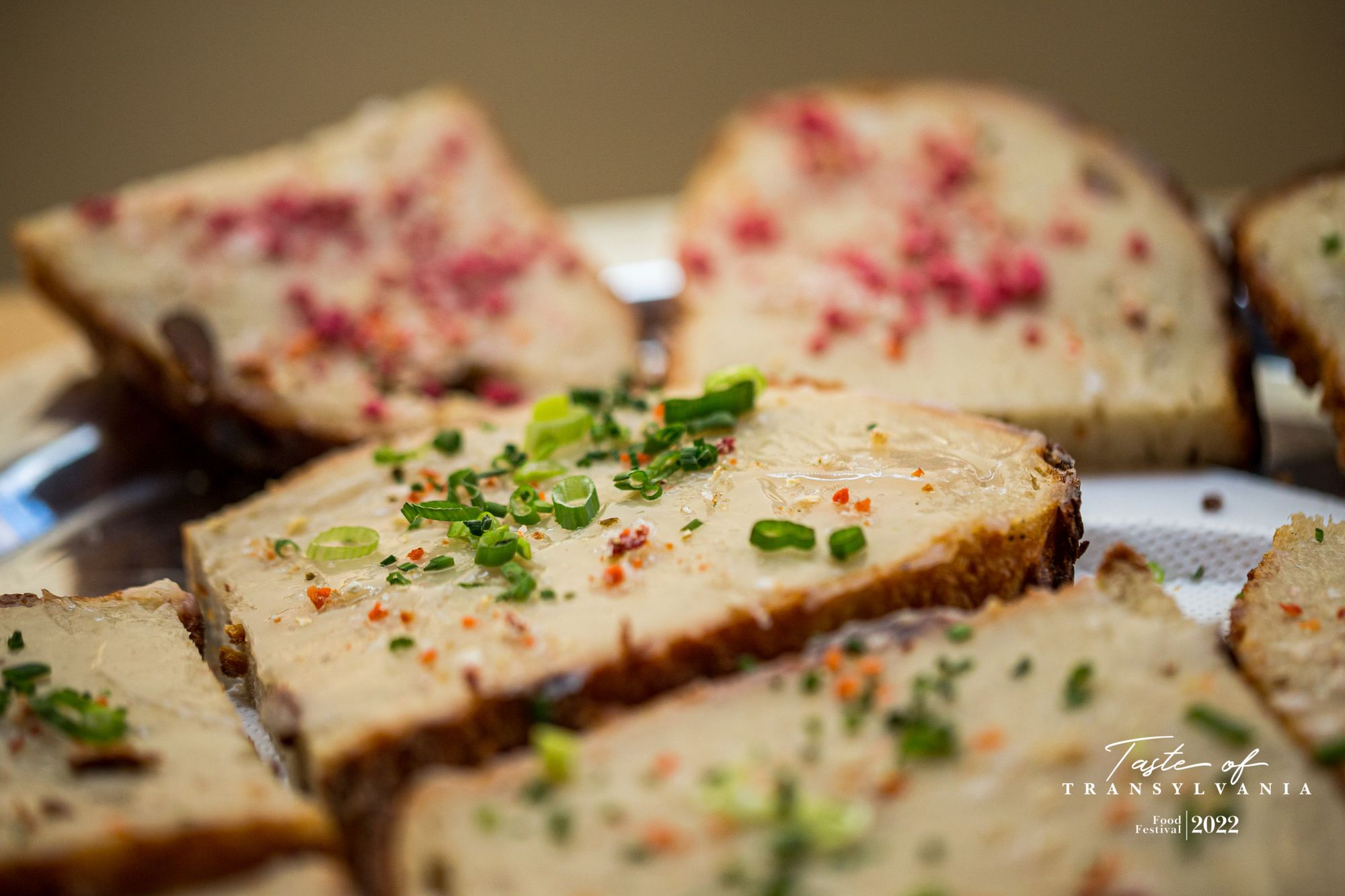
The more adventurous could also sample dishes that were sourced locally, even sometimes collected that very day. At the Páva restaurant representing Székelyudvarhely, for example, you could try the barley porridge with duck intestines and bread with bear fat, but the festival itself was also topped off with a feast of grilled and fried bear meat. This may be a little out of the comfort zone for many, but it’s only fair to tell you about these recipes. While I didn’t get to try these, the taste is said to be sweeter than venison, only slightly drier. Of course, meat is not everything: while we were eating Lajos Bíró’s curd cheese noodles for breakfast in military trucks at 1331 meters above sea level on top of the Csíki-havasok (Ciuc Mountains), Márton Keve, chef of 101Bistro, and Boldizsár Horváth, founder of Farm2Fork, were on a passionate mushroom hunt. They presented their bounty, a large basket of chanterelle and oyster mushrooms, at an impromptu cooking session.
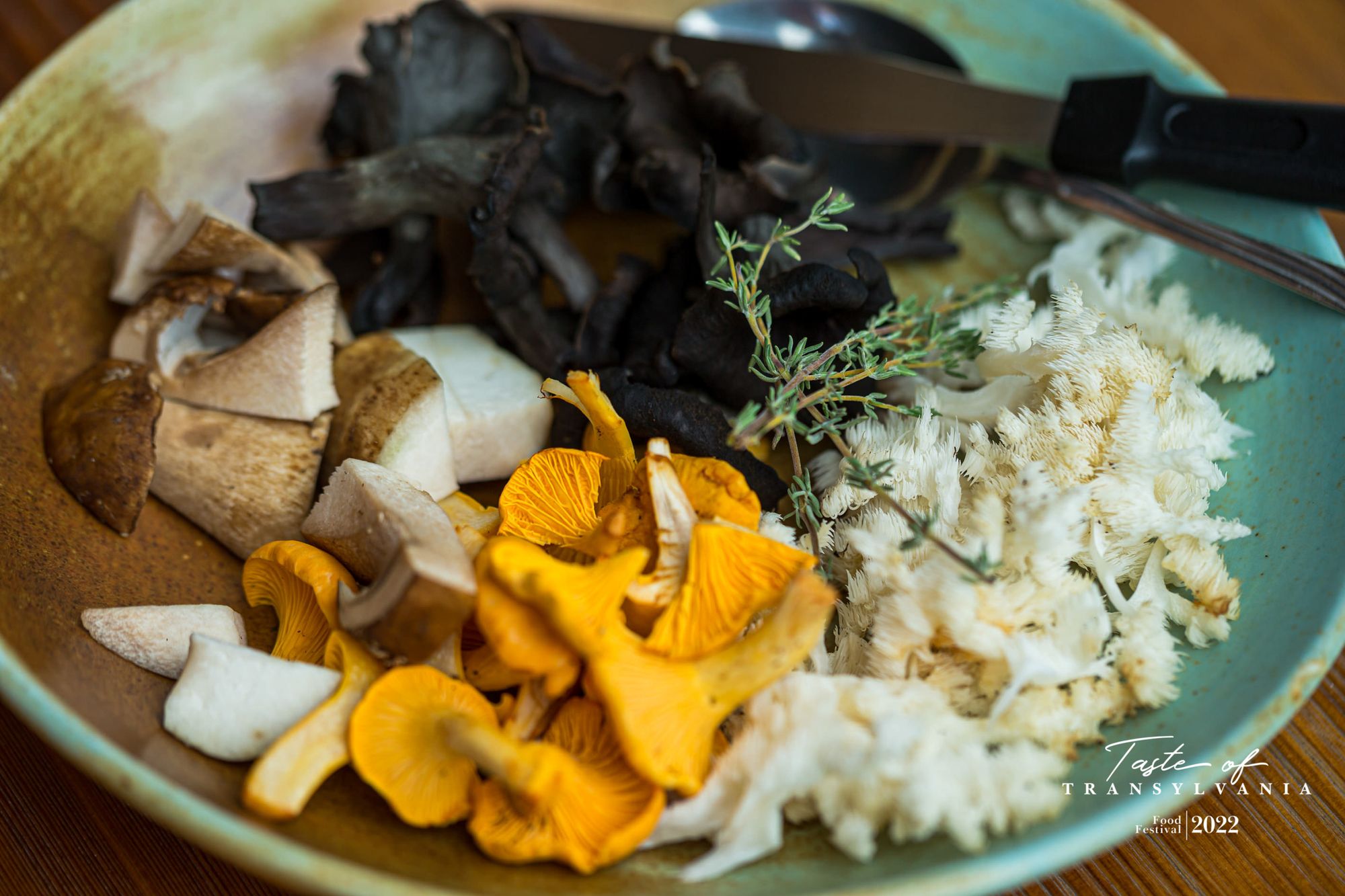
For dessert, we grabbed a spoon and sampled the incredible cheese and dill ice cream of Emma la Dolce from Brașov, or the Orka’s cakes from Sfântu Gheorghe. The owner, Orsi Horváth, is an old acquaintance from the online space, so it was delightful to finally meet her in person. Her confectionery opened 5 years ago, before that she has been traveling around the world. The desserts on their menu are made with a handful of ingredients, a drop of childhood memories, and with a sprinkle of fresh twists. Such was the case with the poppy-seed and plum cheesecake and the puliszka madeleine with rosehip jam, which we instantly fell in love with.
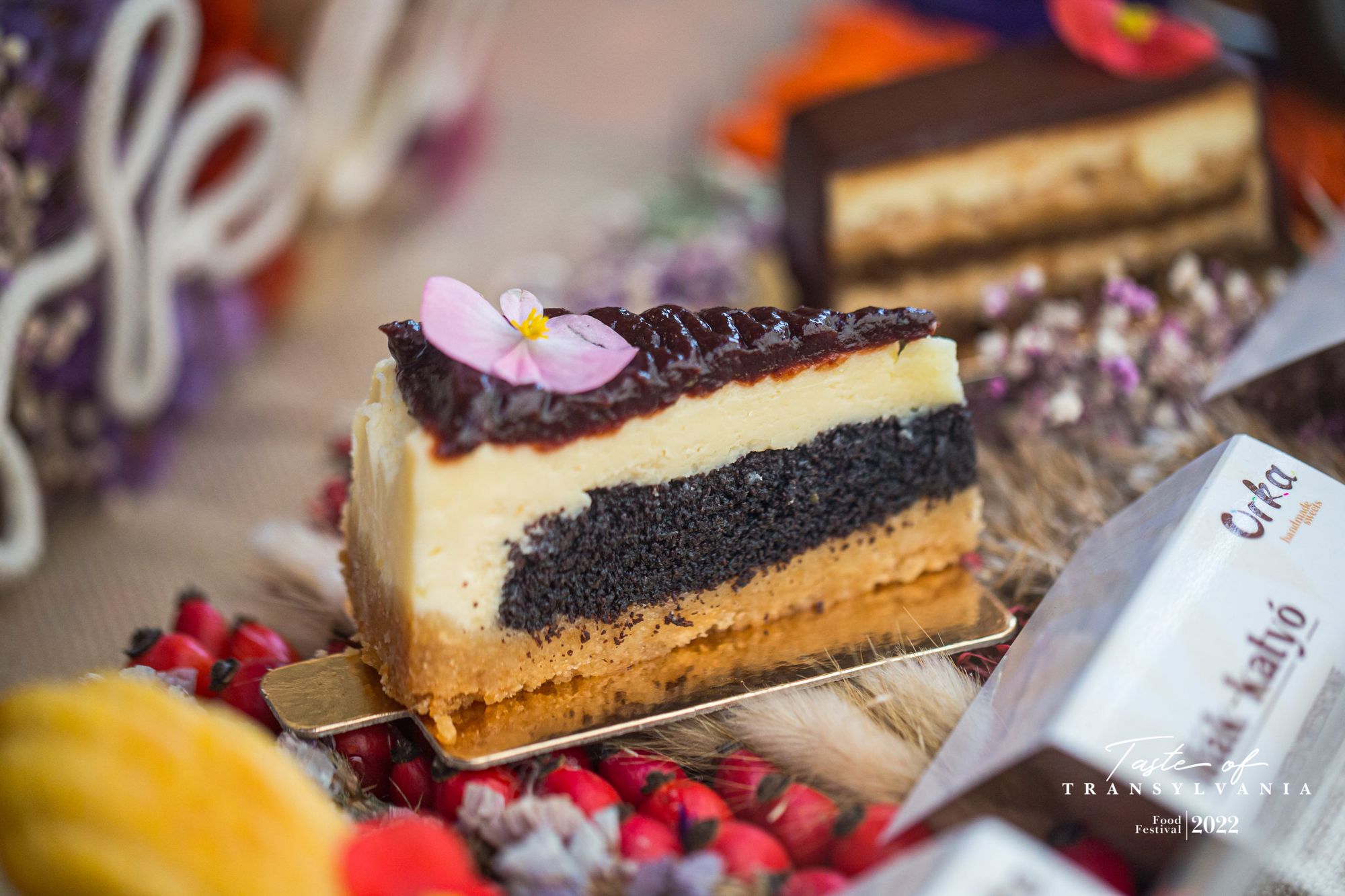
Yet we didn’t just eat, but also wandered around conversing, only to stop from time to time for a moment of silence to let the magic of Gyimes wash over us. An emblematic moment was when Zsófi Mautner held up the newly published, revised version of the book Erdélyi lakoma (Transylvanian Feast—free translation by the Transl.) by Pál Kövi. Zsófi and Adorján had worked on it for years to present the 306 recipes in a dignified “restored” way, presenting the Transylvanian gastronomy “from stove to stove, from man to man.” For those who don’t know, Pál Kövi was an agricultural engineer and footballer from Balassagyarmat, Hungary, who studied in Cluj-Napoca, Transylvania, and moved to New York in the 1950s. In 1966, he bought the Four Seasons restaurant with his partner Tamás Margittai and revived it. The recipe collection is a kind of homage to Romanian times and foods. Simple dishes (including 72 soups), accessible ingredients, beautifully presented. The cover was designed by Viki Hitka, the photos are by Áron Erdőháti and Ági László, and the Kner printing house printed it at lightning speed to get it to Gyimes with us.
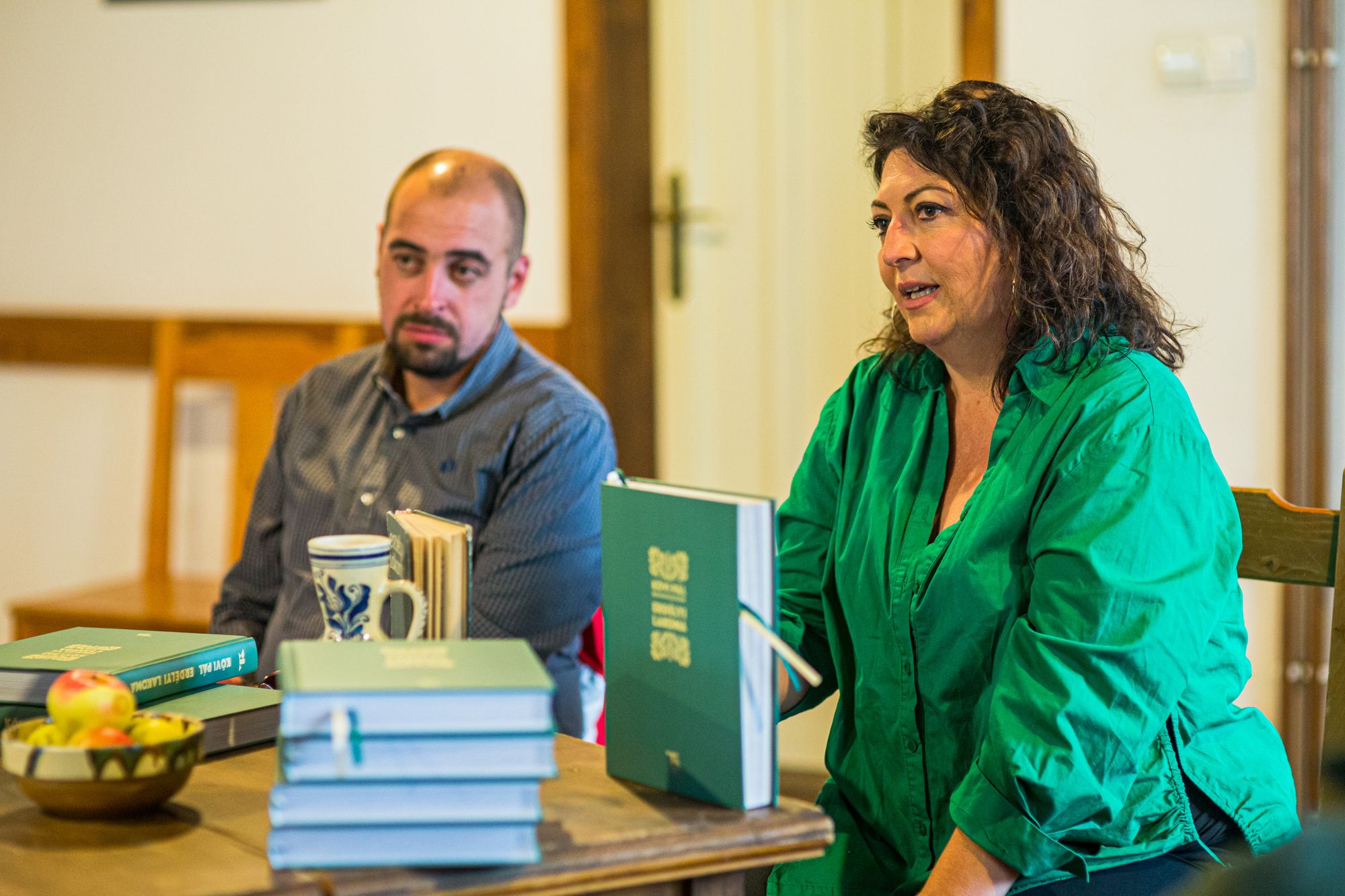

While I could go on for hours, I do hope that the text and pictures above will convey the atmosphere of Taste of Transylvania. I am just incredibly grateful and happy to have been there and to have got a taste of this world. Every moment was a treasure, making the bumpy road well worth it. And the good news is: even though this was the first time the event was organized, there were nearly 2000 visitors, so a return is guaranteed!
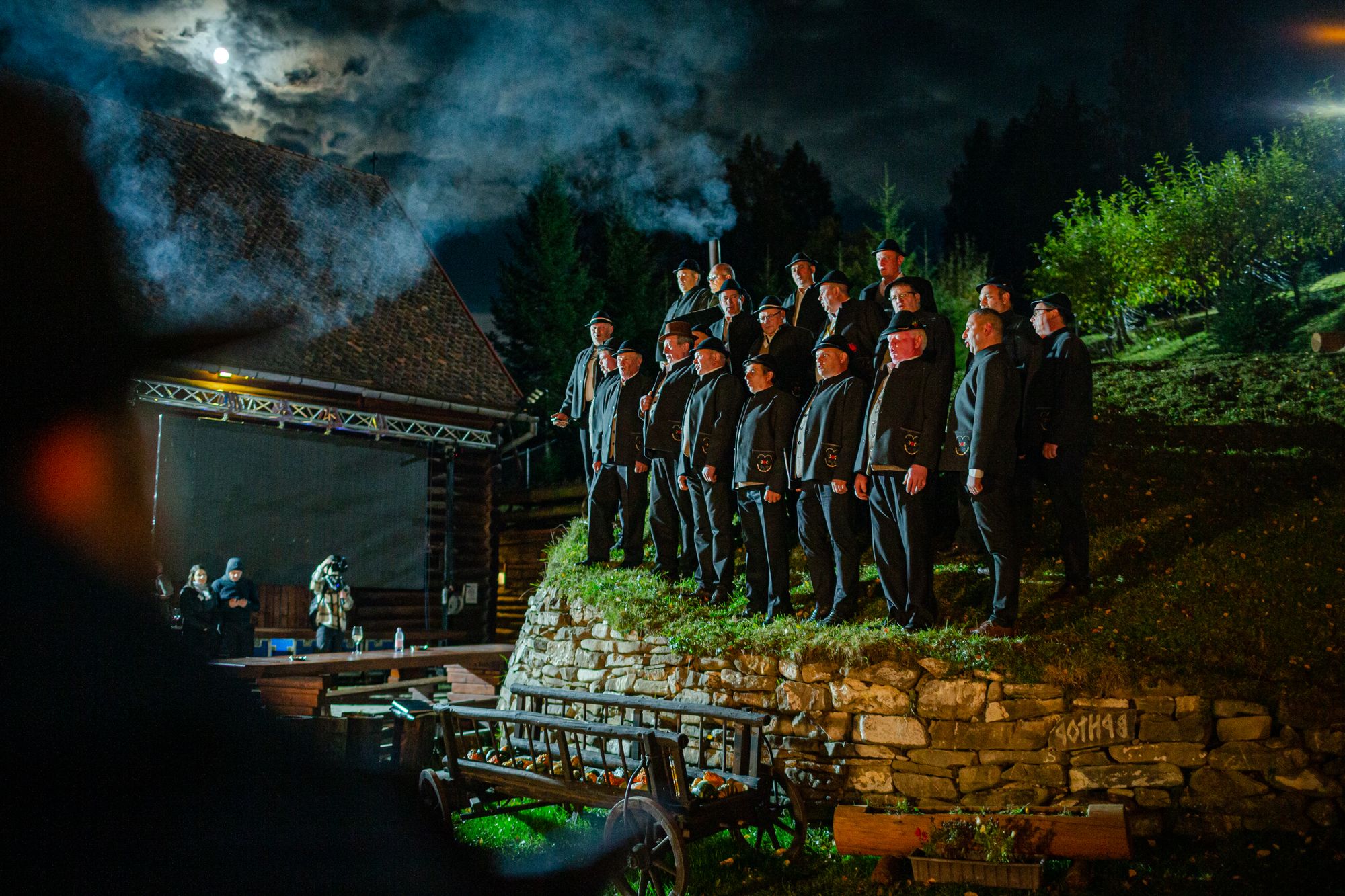
Photos: Előd Bálint Erdély









